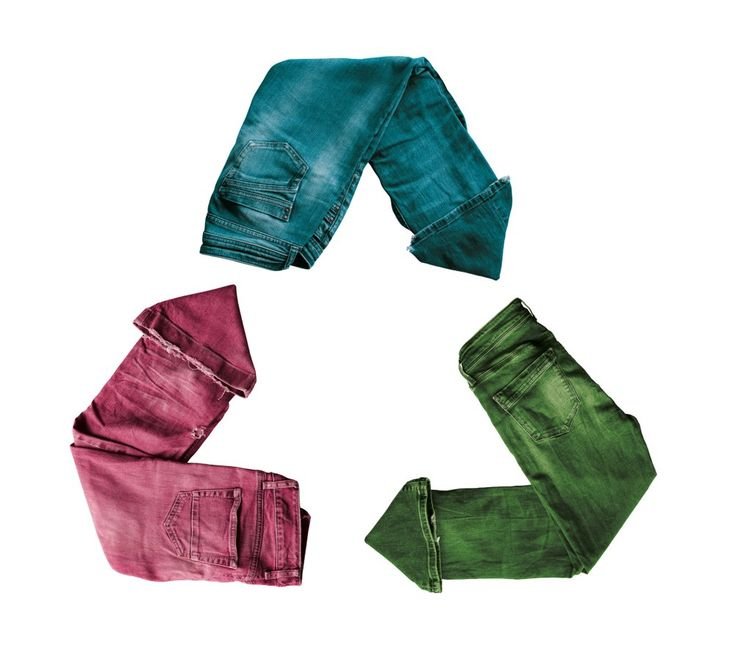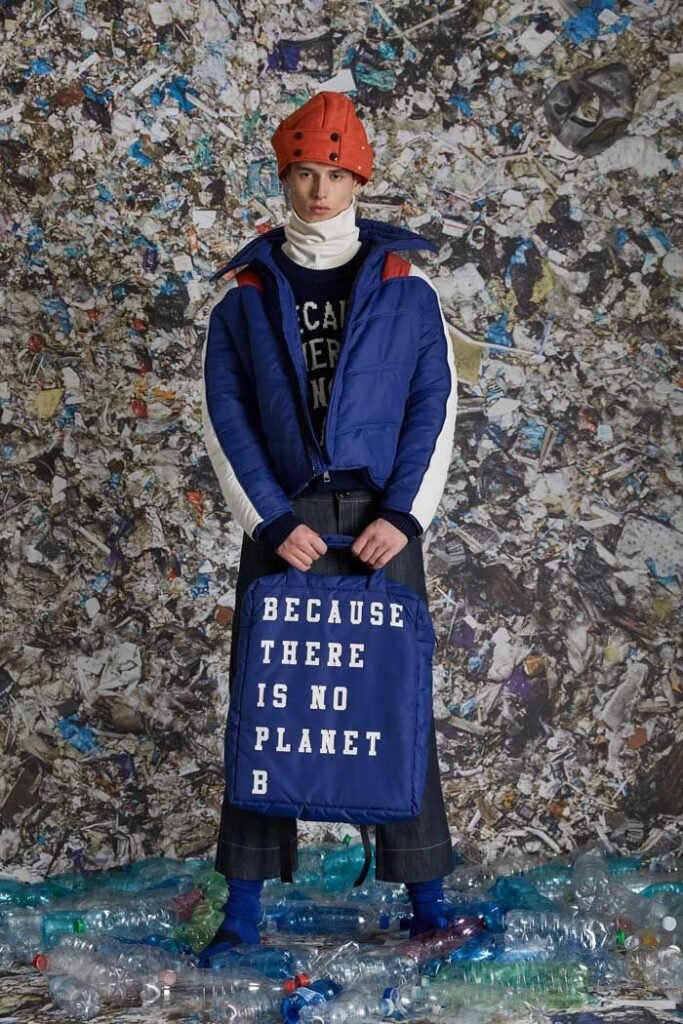Sustainable Fashion: How to Build an Eco-Friendly Wardrobe

Introduction:
Fashion is a significant part of our daily lives, yet it’s also one of the most resource-intensive industries in the world. The fast fashion model encourages overproduction, overconsumption, and massive waste, contributing to environmental pollution and unethical labor practices. But there is a shift happening—more and more people are choosing to build eco-friendly wardrobes that reflect both their style and commitment to the planet.
Sustainable fashion is not just a trend; it’s a movement towards more conscious consumption. It’s about selecting clothing that’s made from eco-friendly materials, produced under fair labor conditions, and built to last. By choosing sustainable fashion options, we can reduce our carbon footprint, lessen waste, and support ethical practices, all while looking stylish.
In this post, we’ll explore practical steps you can take to build a wardrobe that’s not only fashionable but also kind to the Earth. From shopping smarter to caring for your clothes longer, you’ll learn how to make sustainable fashion choices that align with your values and help protect the environment for future generations.

Section 1: Introduction
Fashion is one of the most influential industries worldwide, yet it is also one of the largest contributors to environmental pollution. With the rise of fast fashion, clothing production has exploded, often at the expense of the planet. The excessive use of natural resources, harmful chemicals in textiles, and vast amounts of textile waste are just some of the ways the fashion industry impacts the environment. However, a significant shift is underway. More and more people are embracing sustainable fashion, a movement focused on ethical practices, eco-friendly materials, and durable, timeless pieces that transcend fleeting trends.
Building a sustainable wardrobe isn’t just about buying clothes that are good for the environment—it’s also about making mindful, long-term choices. It’s a way of taking ownership over our consumption habits, reflecting on the impact our clothing choices have on the planet, and choosing quality and longevity over disposability.
In this article, we’ll explore the core principles of sustainable fashion, how to identify eco-friendly fabrics, and the steps you can take to build an eco-friendly wardrobe that minimizes waste and supports ethical practices.
Section 2: Understanding Sustainable Fashion
Sustainable fashion, often referred to as “eco-fashion,” is defined by practices that are mindful of the environment, human welfare, and ethical production. Sustainable fashion is not just a trend but an essential shift towards conscious consumerism. The fashion industry has long been one of the most wasteful sectors in the world, relying on fast-paced production systems that prioritize short-term gains over long-term sustainability.
The key principles of sustainable fashion include:
- Eco-friendly materials: These are textiles and fabrics that have minimal environmental impact in their production, such as organic cotton, hemp, bamboo, and recycled fibers.
- Ethical production: Sustainable fashion brands prioritize fair wages, safe working conditions, and equitable labor practices.
- Longevity: Sustainable fashion encourages quality over quantity, producing durable, long-lasting garments that don’t need to be replaced every season.
Understanding the difference between fast fashion and sustainable fashion is crucial. Fast fashion refers to the mass production of inexpensive, trendy clothes that are often made using unsustainable methods. These clothes are designed to be worn for only a short time before they are discarded, leading to high levels of waste. Sustainable fashion, on the other hand, focuses on creating clothing that is made to last, prioritizes eco-friendly materials, and takes a more thoughtful approach to consumption.
Section 3: Key Components of Sustainable Fashion
When embarking on building a sustainable wardrobe, it’s important to understand the key components that make fashion sustainable:
Eco-Friendly Fabrics and Materials
The materials used in fashion play a significant role in its environmental impact. Traditional fabrics like conventional cotton require huge amounts of water and pesticides to grow. In contrast, eco-friendly fabrics like organic cotton, bamboo, and hemp use less water, fewer pesticides, and fewer chemicals in production, making them better for the environment.
- Organic cotton: Grown without the use of synthetic pesticides or fertilizers, organic cotton supports biodiversity and uses significantly less water than conventional cotton.
- Bamboo: Bamboo is a fast-growing plant that requires little water or pesticides. Fabrics made from bamboo are often biodegradable and antimicrobial, making them a great sustainable option.
- Recycled materials: Fabrics like recycled polyester or upcycled denim help reduce waste and the need for new resources. By reusing textiles that already exist, brands can cut down on the environmental costs associated with producing new fibers.
Ethical Production Practices
Sustainable fashion also involves fair labor practices and ethical production. This includes ensuring that workers in factories are paid fair wages, working in safe conditions, and treated with respect. Ethical fashion also focuses on transparency in the supply chain, meaning brands disclose where and how their products are made.
Section 4: Building an Eco-Friendly Wardrobe
Building a sustainable wardrobe doesn’t mean you need to overhaul your entire closet overnight. Start by assessing what you already own and identifying areas where you can make more sustainable choices. Here are a few tips:
Assessing Your Current Wardrobe
Take stock of your clothing and ask yourself if you really need to buy more. Often, we hold on to clothes we don’t wear or need. By reducing unnecessary purchases, you can minimize waste and save money.
Quality Over Quantity
Opt for pieces that are durable, timeless, and versatile. Choose quality fabrics and well-constructed garments that will last longer and hold up to regular wear.
Supporting Sustainable Brands
Look for brands that prioritize sustainability in their production processes. Many companies are now embracing eco-friendly practices and transparency in their supply chains, making it easier than ever to find responsible brands.
Second-Hand Shopping
One of the most sustainable ways to update your wardrobe is by shopping second-hand. Thrift stores, consignment shops, and online platforms allow you to find high-quality, pre-loved clothing that doesn’t contribute to the demand for new production.
Section 5: Practical Tips for Sustainable Fashion
Building an eco-friendly wardrobe requires some thoughtful planning and smart shopping decisions. Here are several practical tips to guide you in making more sustainable fashion choices:
How to Identify Sustainable Brands
Not all brands claim to be sustainable are created equal. When shopping for sustainable fashion, look for brands that are transparent about their materials, production processes, and labor practices. Many brands now feature sustainability reports or publish their supply chain information, so take the time to research before you make a purchase.
Look for these indicators of sustainable fashion:
- Certifications: Eco-certifications like GOTS (Global Organic Textile Standard), Fair Trade, and OEKO-TEX Standard 100 ensure that a brand is following strict environmental and ethical standards.
- Transparency: Brands that provide information about their sourcing and manufacturing processes are generally more reliable. Brands with detailed product information on where the materials come from and who makes them are more likely to be ethical and sustainable.
Reducing Clothing Waste
One of the main goals of sustainable fashion is to minimize waste. Here are a few ways you can reduce waste and give clothes a longer life:
- Clothing Swaps: Organize or attend clothing swaps where you can exchange gently used items with others. This is a great way to refresh your wardrobe without buying new clothes.
- Repairs: Instead of discarding items that are slightly damaged, try repairing them. Simple sewing fixes like patching holes or fixing buttons can prolong the life of your garments.
- Upcycling: Get creative by transforming old clothes into new items. For example, an old t-shirt can become a tote bag, or worn-out jeans can be turned into a pair of trendy shorts.
Caring for Clothes to Extend Their Lifespan
Proper care is key to extending the life of your clothes. Here are some tips for maintaining the quality of your garments:
- Wash Less Frequently: Washing clothes less often can save water and energy. Try spot cleaning or airing out garments between wears to keep them fresh longer.
- Wash in Cold Water: Washing clothes in cold water helps prevent fabric wear and tear, saving energy and preserving the environment.
- Air Dry: Instead of using a dryer, air-dry your clothes. This reduces energy consumption and helps preserve the fabric.
Section 6: The Role of Recycling and Circular Fashion
Circular fashion is a model that aims to reduce waste by keeping materials in use for as long as possible, whether by recycling, reusing, or upcycling. This is a key part of sustainable fashion that focuses on creating a closed-loop system, in which clothing is designed to be reused, repaired, and recycled, rather than ending up in landfills.
What is Circular Fashion?
Circular fashion is a regenerative model where products are designed to be easily disassembled and reused. Instead of following a linear model—take, make, dispose—circular fashion ensures that materials stay in circulation, reducing the need for new resources and preventing textile waste.
Key practices of circular fashion include:
- Recycling: Brands are beginning to recycle old garments into new textiles. Recycled materials can be used to create new fabrics, which reduces the demand for virgin materials.
- Repurposing: Clothing can be repurposed by reusing fabrics, accessories, or even entire garments, reducing the need to throw away items that are no longer needed or in style.
- Take-back Programs: Some brands now offer take-back programs, where they collect worn clothing from customers and recycle it into new products.
Recycling Old Clothes and Fabrics
Textiles are one of the most significant contributors to waste, but many clothing materials can be recycled. Some brands have implemented programs where customers can return old items in exchange for discounts or store credits. This ensures that garments are recycled and not sent to landfills.
Recycling also reduces the environmental cost of manufacturing new textiles. Fabrics like polyester can be melted down and turned into new products, saving energy and raw materials in the process.
Section 7: Challenges in the Sustainable Fashion Industry
While sustainable fashion is making great strides, there are still several challenges to overcome. Understanding these challenges can help consumers navigate the space and make informed decisions.
Price Considerations
Sustainable fashion is often more expensive than fast fashion due to the higher cost of eco-friendly materials, ethical labor practices, and quality craftsmanship. However, it’s important to remember that investing in sustainable clothing is often a better long-term value. The durability and timeless design of sustainable items mean they last longer and reduce the need for constant replacement.
Accessibility and Availability
Although sustainable fashion is growing in popularity, it’s not always easy to find eco-friendly options that fit your style or budget. Smaller, independent brands that focus on sustainability may not always have the widespread distribution of larger, fast-fashion companies. However, many sustainable fashion brands now sell online, making them more accessible.
Stigma Around Second-Hand Clothing
While second-hand shopping is one of the most sustainable ways to update your wardrobe, there is still a stigma around buying pre-loved clothes. However, buying second-hand not only saves money but also helps divert clothes from landfills. Thrift shops, consignment stores, and online marketplaces like Poshmark or Depop are great options for finding high-quality, sustainable pieces.
Limitations of Sustainable Fashion Practices
Despite the benefits, sustainable fashion is not without its challenges. For instance, some eco-friendly fabrics, like organic cotton, require a lot of water to produce. While these materials are certainly better than conventional ones, it’s essential to continue exploring innovations that reduce the environmental impact of fabric production.
Section 8: The Future of Fashion: Moving Toward a Greener Industry
The future of fashion is undoubtedly shifting towards sustainability. Innovations in sustainable fashion are evolving rapidly, offering new ways to reduce environmental impact and promote eco-friendly choices.
Innovations in Sustainable Fashion
From plant-based fibers like Tencel and Piñatex (made from pineapple leaves) to biodegradable fabrics, the industry is seeing exciting new materials that promise to revolutionize fashion. Additionally, many brands are exploring 3D knitting and on-demand production to reduce waste and overproduction.
The Role of Technology in Eco-Friendly Fashion
Technology plays a significant role in shaping the future of sustainable fashion. From AI-powered systems that predict fashion trends and reduce overproduction to blockchain technologies that offer transparency in supply chains, innovation is helping brands become more sustainable and ethical.
Supporting the Growth of Sustainable Fashion
As consumers, we have the power to support the growth of sustainable fashion. By choosing ethical brands, buying fewer but better items, and embracing circular fashion practices, we can drive the demand for greener fashion and help push the industry towards a more sustainable future.
Section 9: Conclusion
Building a sustainable wardrobe is an investment not just in your personal style, but also in the future of our planet. Sustainable fashion encourages conscious consumption, mindful buying decisions, and a commitment to reducing waste. By embracing eco-friendly materials, supporting ethical production practices, and making thoughtful choices about how we shop and care for our clothes, we can help make the fashion industry a greener, more ethical place for everyone.
Every small change we make in our fashion habits can collectively lead to a big impact. Whether it’s buying second-hand, choosing eco-friendly fabrics, or simply taking better care of the clothes we already own, these steps contribute to a more sustainable and conscious way of dressing. So, take the first step today and start building a wardrobe that reflects your values—one that is both fashionable and kind to the Earth.





2 Comments